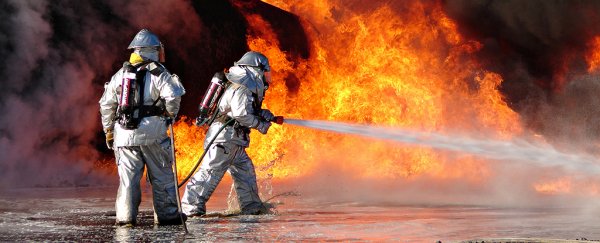If the human race is ever going to be successful in spreading out beyond planet Earth, a lot of pioneering and experimental work needs to be done first. And as far as NASA's concerned, that means starting a large fire in space, just to see what happens.
"Understanding fire in space has been the focus of many experiments over the years," NASA's Gary Ruff said during a press call, adding that previous tests have been nowhere near big enough to give us a proper sense of what could be done in an actual 'space fire' emergency.
The official name for the project is the Spacecraft Fire Experiment-I, or Saffire-I. An expendable, unmanned spacecraft - the Orbital ATK Cygnus capsule - will be used for the testing.
The fire will be lit on the spacecraft remotely, and then various sensors and instruments will be used to measure what's happening before the flames burn out - that could take as little as 20 minutes, NASA says, and the project team is hoping to still be able to recover the spaceship afterwards.
"Despite decades of research into combustion and fire processes in reduced gravity, there have been very few experiments directly studying spacecraft fire safety under low-gravity conditions," the team explains.
NASA is hoping that the data it collects can be used to build the fire-proof space vehicles of the future, and to help them figure out suitable response scenarios if such an incident should actually unfold. The flammability of various materials can also be tested in a low-gravity environment.
The engineers behind the experiment say they not only want to safeguard future space missions, but also help researchers working on fire prevention methods for mines, aeroplanes, submarines, and other similar enclosed spaces. As with much of the research NASA does, the results of its tests are going to be useful in various areas on Earth as well as in space.
Three flights and experiments are planned in total, and while the investigators admit they need a lot more data to truly understand how fire works in space, it's a start. They're going to use a sealed box containing a long strip of cotton-fibreglass composite to initiate the blaze, then video cameras and sensors measuring carbon dioxide, oxygen, heat, and temperature will take over.
Starting fires in space and watching them burn is of course just one of many experiments NASA has planned for the future - the agency told reporters that it's also going to be investigating 3D printing, robotic grippers, and micrometeorites when the next ISS resupply mission gets underway.
Here's a previous space-fire experiment from NASA:
